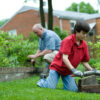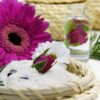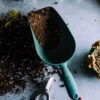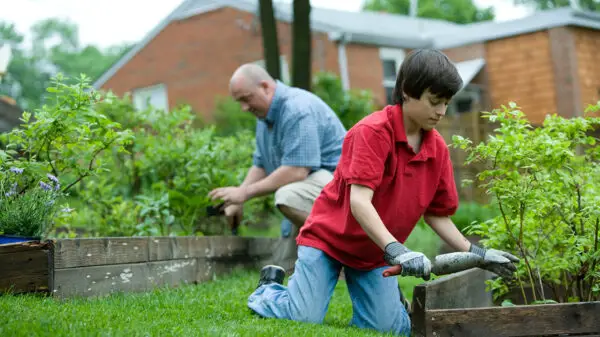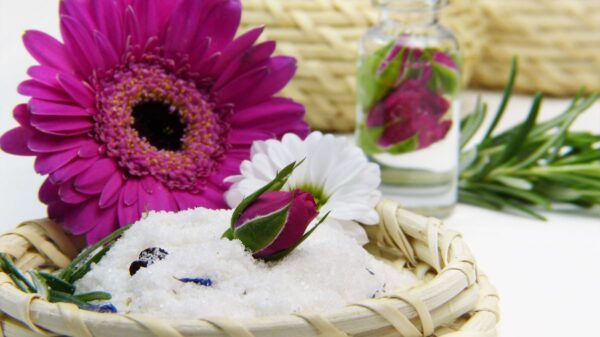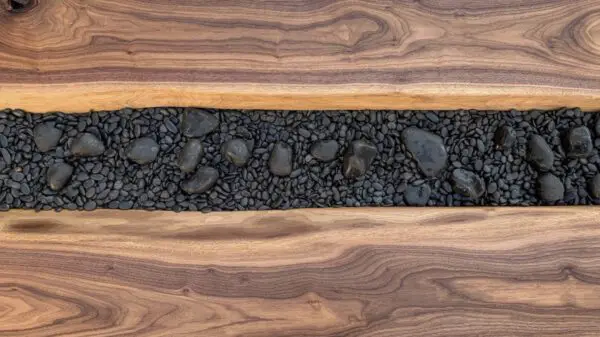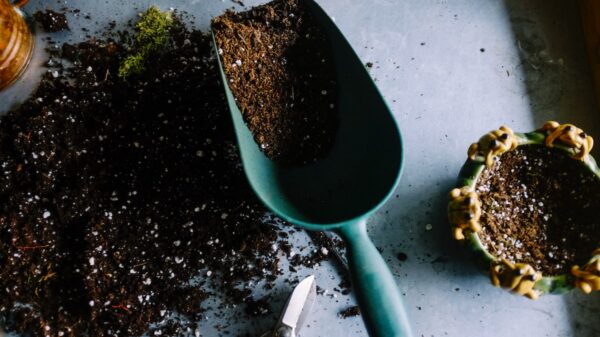Making a More Pollinator-Friendly Microgarden to Support Bees and Butterflies
Are you an avid gardener looking to support local pollinators like bees and butterflies? Creating a pollinator-friendly microgarden is not only rewarding but also beneficial for the environment. As pollinators play a vital role in plant reproduction and ecosystem health, designing your garden to attract and support these creatures can contribute to a thriving ecosystem right in your backyard. In this article, we’ll delve into actionable tips and insights on how you can make your microgarden more pollinator-friendly to support bees and butterflies.
What is a microgarden?
A microgarden, also known as a miniature garden or small-scale garden, is a tiny and compact gardening space that is designed to make the most of limited areas. It’s essentially a small garden that can be created in various settings, such as balconies, windowsills, small yards, or even indoors. Microgardens are carefully planned to maximize space and utilize containers, raised beds, or even vertical structures to grow plants. Despite their size, microgardens can be incredibly versatile and offer opportunities to cultivate a variety of plants, from flowers and herbs to vegetables and ornamental shrubs. These miniature gardens provide a creative outlet for gardening enthusiasts who may have space constraints, allowing them to nurture their green thumb and enjoy the pleasures of gardening on a smaller scale.
What is a pollinator friendly microgarden?
A pollinator-friendly microgarden is a thoughtfully designed and cultivated small-scale garden that aims to attract and support pollinators such as bees and butterflies. This miniature garden is intentionally created to provide a welcoming habitat and abundant food sources for these essential creatures. While compact in size, a pollinator-friendly microgarden plays a significant role in promoting biodiversity, ecological balance, and the overall health of the environment.
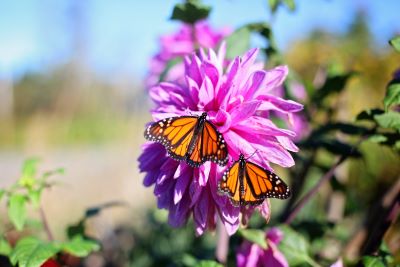
What are the key features of a pollinator friendly microgarden?
Any good pollinator friendly microgarden will have a number of key features to help nurture a pollinator-friendly environment.
1. Native plants
2. Flower diversity
3. Nectar-rich blooms
4. Host plants
5. Water source
6. Shelter & nesting opportunities
7. Avoiding pesticides
8. Year-round blooms for consistent food
9. Wild & naturalistic design
How Can I Make My Microgarden More Pollinator-Friendly to Support Bees and Butterflies?
Turning your microgarden into a pollinator paradise requires a thoughtful approach. Here are key steps and strategies to help you achieve this:
Opt for Native Plants
Native plants are the foundation of a successful pollinator-friendly microgarden. These plants have evolved alongside local pollinators and provide essential food sources. Natives are adapted to the region’s climate and soil, making them easier to maintain. Species like coneflowers, bee balm, and milkweed are popular choices that attract bees and butterflies while adding natural beauty to your garden.
Create Diverse Habitats
Pollinators have varying needs at different stages of their lifecycle. To accommodate them, design diverse habitats within your microgarden. Incorporate a mix of flowering plants, shrubs, and trees to offer shelter, nesting sites, and foraging opportunities. A water source like a shallow birdbath can also attract butterflies and provide them with a spot to drink and rest.
Provide Continuous Blooms
Maintain a consistent supply of blooming plants throughout the growing season. Pollinators rely on nectar and pollen as their main food sources, so having flowers that bloom at different times ensures a year-round food supply. Plan your garden layout to include early, mid-season, and late-blooming plants to cater to the needs of bees and butterflies throughout the year.
Choose a Variety of Flower Shapes and Colors
Diverse flower shapes and colors appeal to different pollinator species. Bees are attracted to blue, purple, and yellow blooms, while butterflies are drawn to bright, red, orange, and pink hues. Incorporate flowers with both simple and complex shapes to accommodate various pollinator preferences.
Avoid Pesticides and Herbicides
Pesticides and herbicides can be harmful to pollinators. Opt for natural pest control methods such as introducing beneficial insects like ladybugs and lacewings. These predators help keep pest populations in check, reducing the need for chemical treatments that could harm pollinators.
Provide Shelter and Nesting Sites
Create a welcoming environment for pollinators by adding shelter options like bee houses and butterfly boxes. These structures offer nesting spots and protection from harsh weather conditions. Research the nesting habits of different pollinators in your region and tailor your garden to their needs.
Support Native Bees
In addition to honeybees, native bees are excellent pollinators. Many native bee species are solitary and don’t live in hives. Enhance your microgarden’s appeal to native bees by leaving patches of bare soil for burrowing bees and offering plants they prefer.

Embrace Imperfection
A wild and naturalistic garden design often resonates better with pollinators. Allow plants to grow and bloom naturally without strict pruning. Fallen leaves and twigs can serve as hiding spots for pollinators during their dormant phases.
Incorporate Butterfly-Friendly Plants
To attract butterflies, include specific butterfly-friendly plants in your microgarden. Milkweed, for instance, is essential for monarch butterfly reproduction. Choose nectar-rich plants like lantana, verbena, and butterfly bush to support their feeding needs.
Consider Planting in Clusters
Planting flowers in clusters helps pollinators locate food sources more easily. Grouping the same plant species together creates a concentrated feeding area, making it more convenient for bees and butterflies to gather nectar and pollen.
Use High-Quality Soil and Mulch
Healthy soil is the backbone of any thriving garden. Ensure your microgarden has well-draining, nutrient-rich soil to support robust plant growth. Organic mulch helps retain moisture, suppress weeds, and improve soil structure while providing a conducive environment for beneficial soil organisms.
Attracting Bees and Butterflies with Colorful Blooms
Vivid and fragrant blooms have the power to entice both bees and butterflies. Consider planting a mix of flowers that appeal to their sensory preferences. Bright colors and enticing fragrances can create a sensory haven in your microgarden, attracting these pollinators from afar.
Support Bees and Butterflies with a Water Source
Just like all living creatures, pollinators need water to survive. A shallow dish filled with fresh water, along with a few small rocks or pebbles for perching, can serve as a convenient water station for bees and butterflies. Regularly replenish the water to ensure it remains clean and accessible.
The Importance of Pollinator-Friendly Gardens
Pollinator-friendly microgardens contribute to the overall health of ecosystems by supporting the intricate web of life and nurture the delicate balance of our ecosystems. Bees and butterflies are not only beautiful to observe but also vital for the pollination of crops and native plants. By nurturing these insects, you’re playing a crucial role in preserving biodiversity and ensuring a sustainable future.Beyond the aesthetic appeal and the joy they bring to garden enthusiasts, these gardens are a cornerstone of environmental health and sustainability. The preserve biodiversity, help with food security, contribute to the economy, and support wildlife.
What are the best microgarden plants for pollinators?
When it comes to creating a pollinator-friendly microgarden, selecting the right plants is crucial. Here are some of the best microgarden plants that attract and support pollinators like bees and butterflies: lavender, coneflowers, bee balm, milkweed, salvia, zinnias, sunflowers, butterfly bush, lantana, phlox, aster, oregano, catmint, marigolds, and rosemary. So to make your microgarden extra pollinator friendly consider planting a variety of the best pollinator friendly plants.
Frequently Asked Questions (FAQs)
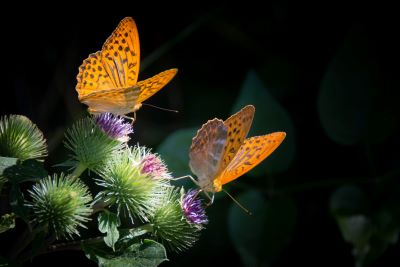
Q: Do I need a large space to create a pollinator-friendly microgarden?
A: Not necessarily. Pollinator-friendly microgardens can be adapted to various sizes, from small balconies to spacious yards. The key is to provide the right plants and habitats that attract pollinators.
Q: Can I incorporate non-native plants in my microgarden?
A: While native plants are generally the best choice, you can include a few non-native plants that offer nectar and pollen. However, prioritize native species, as they have evolved to meet the needs of local pollinators.
Q: How can I identify the pollinators in my garden?
A: Spend time observing your garden to identify the pollinators that visit. You can also use field guides and online resources to help you recognize different species of bees and butterflies.
Q: What role do bees and butterflies play in ecosystems?
A: Bees and butterflies are essential pollinators that facilitate the reproduction of plants. They transfer pollen from one flower to another, enabling the production of fruits and seeds. This process is crucial for maintaining diverse ecosystems.
Q: Can I create a pollinator-friendly microgarden in a urban environment?
A: Absolutely! Urban environments can benefit greatly from pollinator-friendly microgardens. Even small patches of greenery in cities can attract and support pollinators, contributing to urban biodiversity.
Q: How do I prevent common pests without harming pollinators?
A: Introduce natural predators like ladybugs and lacewings to control pest populations. You can also use physical barriers like row covers to protect your plants from pests while allowing pollinators to access them.
Q: How much work is a microgarden?
A: Creating and maintaining a microgarden can be a delightful and rewarding endeavor, but the level of work involved largely depends on the size, complexity, and types of plants you choose.
Q: Can you have a microgarden in winter?
A: Yes, you can absolutely have a microgarden in winter! While the cold weather might present some challenges, there are several ways to continue enjoying your garden even during the colder months. It’s important to make sure you choose winter-hardy plants and that you protect vulnerable plants. You’ll want to use containers and to incorporate plants that bloom in winter.
In Conclusion
Transforming your microgarden into a haven for bees and butterflies is a rewarding endeavor that combines your love for gardening with a commitment to environmental stewardship. By following the strategies outlined in this article, you’ll create a vibrant and thriving ecosystem that supports pollinators while enhancing the beauty of your outdoor space. So, roll up your sleeves, plant those native flowers, and welcome the fluttering wings of pollinators into your garden.



